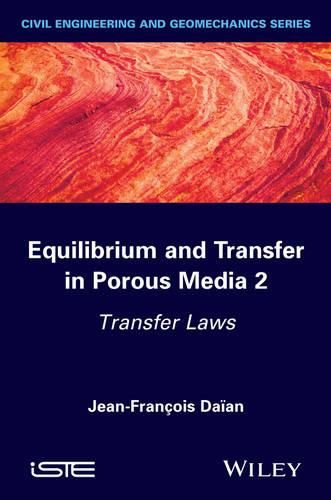Readings Newsletter
Become a Readings Member to make your shopping experience even easier.
Sign in or sign up for free!
You’re not far away from qualifying for FREE standard shipping within Australia
You’ve qualified for FREE standard shipping within Australia
The cart is loading…






A porous medium is composed of a solid matrix and its geometrical complement: the pore space. This pore space can be occupied by one or more fluids. The understanding of transport phenomena in porous media is a challenging intellectual task. This book provides a detailed analysis of the aspects required for the understanding of many experimental techniques in the field of porous media transport phenomena. It is aimed at students
or engineers who may not be looking specifically to become theoreticians in porous media, but wish to integrate knowledge of porous media with their previous scientific culture, or who may have encountered them when dealing with a technological problem. While avoiding the details of the more mathematical and abstract developments of the theories of macroscopization, the author gives as accurate and rigorous an idea as possible of the methods used to establish the major laws of macroscopic behavior in porous media. He also illustrates the constitutive laws and equations by demonstrating some of their classical applications. Priority is to put forward the constitutive laws in concrete circumstances without going into technical detail.
This second volume in the three-volume series focuses on transport and transfer from homogeneous phases to porous media, and isothermal transport in the pore space.
$9.00 standard shipping within Australia
FREE standard shipping within Australia for orders over $100.00
Express & International shipping calculated at checkout
A porous medium is composed of a solid matrix and its geometrical complement: the pore space. This pore space can be occupied by one or more fluids. The understanding of transport phenomena in porous media is a challenging intellectual task. This book provides a detailed analysis of the aspects required for the understanding of many experimental techniques in the field of porous media transport phenomena. It is aimed at students
or engineers who may not be looking specifically to become theoreticians in porous media, but wish to integrate knowledge of porous media with their previous scientific culture, or who may have encountered them when dealing with a technological problem. While avoiding the details of the more mathematical and abstract developments of the theories of macroscopization, the author gives as accurate and rigorous an idea as possible of the methods used to establish the major laws of macroscopic behavior in porous media. He also illustrates the constitutive laws and equations by demonstrating some of their classical applications. Priority is to put forward the constitutive laws in concrete circumstances without going into technical detail.
This second volume in the three-volume series focuses on transport and transfer from homogeneous phases to porous media, and isothermal transport in the pore space.